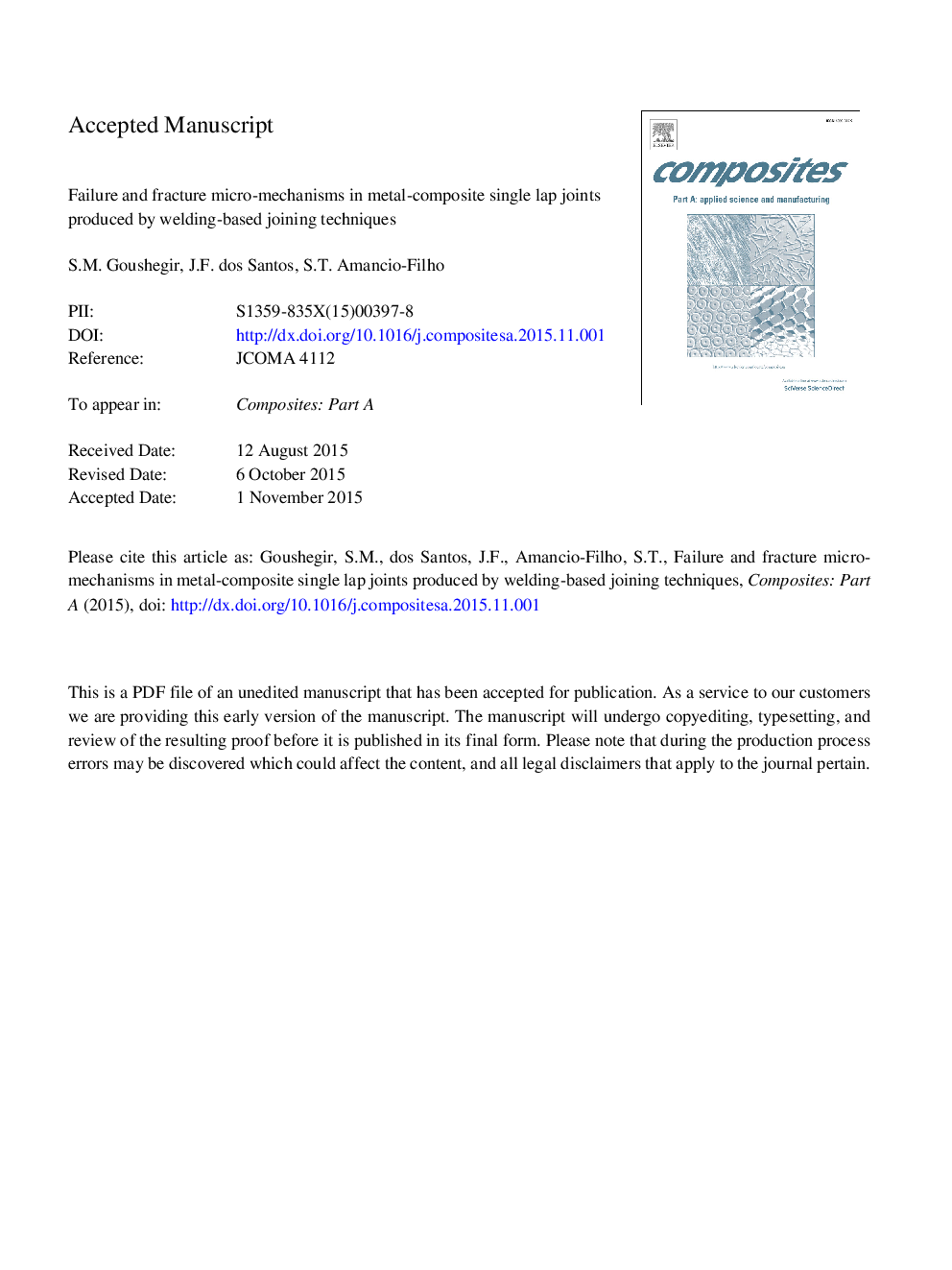| Article ID | Journal | Published Year | Pages | File Type |
|---|---|---|---|---|
| 7891282 | Composites Part A: Applied Science and Manufacturing | 2016 | 34 Pages |
Abstract
Welding-based joining technologies have been recently developed for metal-composite lightweight structures. In this work, the welding-based joining technology, friction spot joining, was selected to study the failure and fracture micro-mechanisms of an aluminum-composite single lap joint. Failure analysis suggested that the radial cracks nucleate at the periphery of the bonding area and propagate rapidly until failure of the so-called adhesion zone. Upon further loading the cracks propagate into the transition and plastically deformed zones leading to a reduction of the stiffness of the joint. The findings of the fractography demonstrated a mixed brittle-ductile fracture. Three zones were identified on the fracture surfaces: a smooth and featureless area demonstrating brittle fracture, a quasi-smooth area representing a mixture of ductile and brittle fractures and finally a zone with a highly rough surface implying ductile fracture of the composite part. Further, fiber pull-out and breakage were identified as additional fracture micro-mechanisms.
Related Topics
Physical Sciences and Engineering
Materials Science
Ceramics and Composites
Authors
S.M. Goushegir, J.F. dos Santos, S.T. Amancio-Filho,
